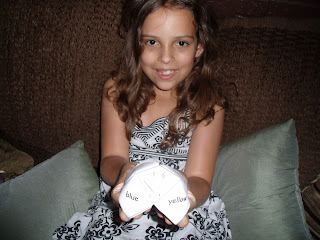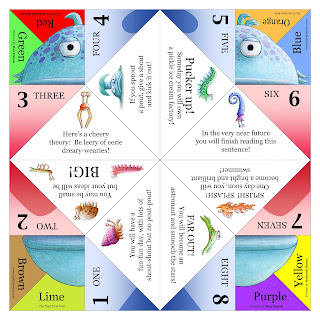Day Two: Summer Vacation. All is going according to plan. Maddie has been neat and tidy, helping me clean her room, and so far the crafts she's chosen have been neat as....Oh, no. Plaster of Paris.
Meet our new craft. Make your own mummy.
I got this kit at A.C. Moore on clearance. It was $19.99 and I bagged it for $5.99.
Never underestimate the power of the clearance aisle and always look for those "discount" stickers. On a good day I can pick up at least three or four craft kids for about $20-25. That's not bad. And each one is a big chunk out of your day. Not only that, most of these crafts are powered on imagination. A word of caution on crafts: If you are going for crafts that stretch your child's imagination, skip the ones that are prefab, and put together with just a little glue (those foam stickers on foam paper things are the worst). Where's the stimulation in that? Go for crafts that rely on imagination: those that require painting, glitter, beads,
mummies, clay, weaving, building, etc...While the mummy might seem to be sort of cut and dry and boring, your child is introduced to an artistic medium she may have never used before. Exposing children to as many forms of art, in this case sculpture, is vital to their Humanities and artistic education.
But I do wonder why these mummy kits were on discount (and why there were so many of them). I wonder why they weren't selling. Is there an underground mommy boycott? Is it just too messy? To heck with messy! I have an "outside" and I have a hose. I'll be using them both.
Step One: Protect your clothing and surfaces. Smock. Rag tee-shirt. Apron. Make sure to put down plastic. A section of a regular garbage bag will do.
Step Two: This kit comes with a little pliable skeleton. You can pose him anyway you want. One of the examples is a walking mummy. We chose to make a mummy that was laying down. We'll be making a sarcophagus so we need Imhotep in the proper position. If you want to do this without a kit, get masking tape and newspaper (paper towels work, too), and mold, crush, and tape, creating a form into anything you like. You can make a cat shape (the Egyptians mummified cats), for example.
Step Three: The plaster of Paris strips come in a roll. You'll need to cut it into workable strips about 6-8" long and 2" width. Again, if you aren't using a kit, you can get rolls of plaster of Paris at local crafts stores like AC Moore and Joann's. They have them; I checked for you.
Step Four: Get a shallow bowl (the kit provides you with one), and fill with cool water. The kit comes with gloves, but if you're brave, you can do this without. Just make sure to clean your hands immediately after you're finished.
Dip the strips in until wet. Don't soak them or they will lose the plaster. Wrap the strips around the form. Work somewhat quickly, as the plaster will begin to set. Make sure you smooth out wrinkles. I suggest you cover the mummy head to toe at least twice.
And voila! You have a mummy! Let it dry for several hours. The outside might be hard, but the inside might still be soggy, and that can compromise the shape.
This craft took up about an hour. YAY! It wasn't as messy as I thought it would be, so I think you could actually do this craft at a kitchen table.
Tune in tomorrow for
Mummy Making Part Two: The Sarcophagus













































